Over the last week or so two new sport-focused watches from non-sport focused companies have been announced. First up was last week’s announcement of the LG Watch Sport (and LG Watch Style), which was then followed by Sunday’s announcement from Huawei of their Watch 2 unit. In some ways these watches could be viewed as just more random Android Wear watches targeted at the general public. But in reality there’s a very subtle message not well highlighted about the Huawei watch that should cause the likes of Garmin, Polar, and Suunto to pay attention.
I had a chance to get some hands-on time with both while here at Mobile World Congress in Barcelona. Of course, it was fairly limited, since both watches were tethered down to fancy tables to keep me from going for a run. Still, it was enough to poke at some of the features and dive into some of the early issues raised (in the case of the LG Watch Sport). Perhaps down the road I’ll dive deeper into one or both of them.
In any case – this isn’t a review, nor really a deep dive into all the features of these units. It’s just a quick look at some of the interesting things that stood out to me about each watch.
Oh – and just a quick note about Android Wear: Yes, it works on an iOS device. Maybe not as well as Android (ok, definitely not as well), but with Android Wear 2.0 a lot of those quirks are disappearing. So if you previously thought it was only an Android phone thing…think again.
Huawei Watch 2:
Up until this point, Android Wear watches have largely been about the Android Wear platform – not the fitness platform. Which sounds stupidly obvious, but it’s an important distinction in why I think most Android Wear watches have failed to catch-on with the fitness realm. Instead of offering a cohesive sports and fitness experience, they focus on just being a branded version of Android Wear. Polar’s brand. Samsung’s brand. Moto’s brand. New Balance’s brand.
Even in the case of Polar, the extent of fitness on that watch was purely focused within the Polar app and the watch face. Outside of that, it was just another Android Wear device. And even more specifically, Polar’s app was really just about recording the activity or basic workouts.
And there’s nothing wrong with that per se (the M600 is a great watch), but as Polar themselves has said – it won’t suit all athletes, largely due to the limited battery life and lack of advanced training metrics like their V800 has.
Whereas I think Huawei might be the first company to step towards that goal. Of course, to catch everyone else up in one bulleted list or less, it has all the Android Wear staples that basically everyone has:
– Built-in GPS
– Built-in optical HR
– Built-in music storage and connectivity
– Bluetooth Smart and WiFi
– Microphone (for both audio commands and phone calls in this case)
– Android Wear 2.0 support
– Ability to run various Android Wear apps
– 1-2 days of battery life
Then it has less-common, but certainly not 100% unique features (at least on Android Wear):
– LTE cellular connectivity
– NFC payments (contactless payments)
– Barometric altimeter
– 30-day battery life in time/step tracker mode only (Casio has something similar)
Finally, it has one specific feature not found on any other Android Wear watch today:
– Integrated FirstBeat analytics for advanced training metrics
And it’s this last one here that’s really of interest. See, most other watches will use generic metrics for calorie burn. Really basic stuff that rarely leverages heart rate (Polar is an exception here). But Huawei goes way further than Polar. For example, you’ll get a Training Effect score:
As well as Recovery Time:
And even VO2Max:
And the real kicker here is that in theory all of these should actually match what you’d get on a Garmin device. That’s because Garmin licenses the exact same technology from FirstBeat. Of course, Garmin does go further in that licensing – such as all the new training and recovery scores in the Fenix5. Additionally, Garmin actually logs this data onto an online platform via the saved activity files, whereas it remains a bit fuzzy as to if or how this data is logged elsewhere in the Huawei platform.
(Side note: They almost nailed this display station…up until they put that specific bike there.)
Still, it’s an impressive and important step forward – especially since recovery time is set to be aware of past workouts as well, thus being cumulative.
Of course – the big ticket item is whether or not the optical HR sensor is accurate. You see, if it’s not accurate then everything falls apart like a house of cards. All of these measurements depend heavily on heart rate (plus some distance aspects). While they can handle being slightly off with materially impacting recovery and training scores, they can’t be horribly off (often a case of poor optical sensors seen in most Android Wear watches).
Unfortunately, I don’t have an answer at this point on that piece. It’s something I’ll have to poke at down the road if I pick up a unit to test. Which, I probably will. Priced at $329, it’s roughly in the ballpark of other Android Wear fitness devices on the market.
Of course one of the challenges with the watch gaining steam is simply that Huawei isn’t a well-known brand in North America (or barely even Europe) to most consumers. Sure, the tech crowd know them. As from a pure wearables sales numbers standpoint they do do well, but those sales are mostly in China – and mostly lower-priced wearables (i.e. $20 units).
Wanna see it all in action? More of a video kinda person? No problem – I shot this short and sweet hands-on goodness at MWC about it:

As noted above, it’s set to start shipping in March in Europe, and North America in April.
LG Watch Sport:
Next up we’ve got the LG Watch Sport, which came out the week prior. This watch isn’t super-unique in the grand scheme of Android Wear wearables. It’s got very similar overall specs to that of the Huawei watch:
– Built-in GPS
– Built-in optical HR
– Built-in music storage and connectivity
– Bluetooth Smart and WiFi
– Barometric altimeter
– Microphone (for both audio commands and phone calls in this case)
– Android Wear 2.0 support
– Ability to run various Android Wear apps
– A day of battery life
– LTE cellular connectivity
– NFC payments (contactless payments)
It does have the unique feature of being able to track gym/core exercises. Sorta like the Microsoft Band did.
So all that’s fine and good. But for the most part, it’s pretty basic when it comes to fitness. You’ll likely be downloading some 3rd party apps like Strava, Ghostracer, or similar to get the most from it.
Also – there’s technically two LG watches that were announced, the LG Watch Sport, and the LG Watch Style. Hang tight and I’ll talk about the Style in a second.
But what a lot of folks have focused on with LG Watch Sport is how big the unit is. For example, Lauren Goode from the Verge talked about it in her first look last week. So I wanted to dig into that piece a bit deeper and compare it to some of the other sport/fitness offerings out there. You’ll find those video comparison in the pixels below:

The key takeaway is it’s really the band that’s the problem. Some have noted that the antenna is in the band, which is logical – many companies do that. Or rather, did that. That trend stopped about 4-6 years ago (I think the last Garmin watch that did that was the FR410). Just like Suunto has moved away from the satellite bump seen in the Ambit lineup. Sure some bands do that, because they are far thinner. But for the most part the vast majority of companies now have separable wrist straps. And that’s largely because consumers prefer it, and it also makes service/support easier.
In this case, the straps definitely are affixed via screws, and there’s what appears to be a gap – which means that it’s not 100% molded together. In any case, that strap piece is what causes the unit to be so big and floppy.
If you ignored that part, then it’s really no different than Garmin’s Fenix series in terms of size.
Beyond that though, I’m not certain this watch will make a big splash in the fitness wearables realm. There are only two color options from a styling standpoint (and just one size), so I think you’ll see more tech people than fitness people get this one. The price is $349.
On the flip side – you do have the LG Watch Style, which is downright stunning in the looks department. It reminds me of how when folks first saw the original Garmin Vivoactive and couldn’t believe how thin it was for a GPS watch.
Except two problems: No GPS, and no optical HR sensor. Thus likely a no-go for most people.
Still, it’s always interesting to see companies experimenting. In the case of the major phone makers, most of these wearables don’t tend to do too well sales-wise. You’ve seen companies like Samsung have higher volume numbers, but that’s largely because they are bundled with phone purchases (for free). But since sales aren’t broken out that way, it’s hard to know how many units these companies are truly selling by themselves. And even harder to know how many are being used in a fitness capacity.
Still, with Android Wear 2.0 – hopefully that’ll give developers (and thus consumers) a reason to try the platform, and thus give more competition to the fitness sector in general.
With that – thanks for reading!
FOUND THIS POST USEFUL? SUPPORT THE SITE!
Hopefully, you found this post useful. The website is really a labor of love, so please consider becoming a DC RAINMAKER Supporter. This gets you an ad-free experience, and access to our (mostly) bi-monthly behind-the-scenes video series of “Shed Talkin’”.
Support DCRainMaker - Shop on Amazon
Otherwise, perhaps consider using the below link if shopping on Amazon. As an Amazon Associate, I earn from qualifying purchases. It doesn’t cost you anything extra, but your purchases help support this website a lot. It could simply be buying toilet paper, or this pizza oven we use and love.

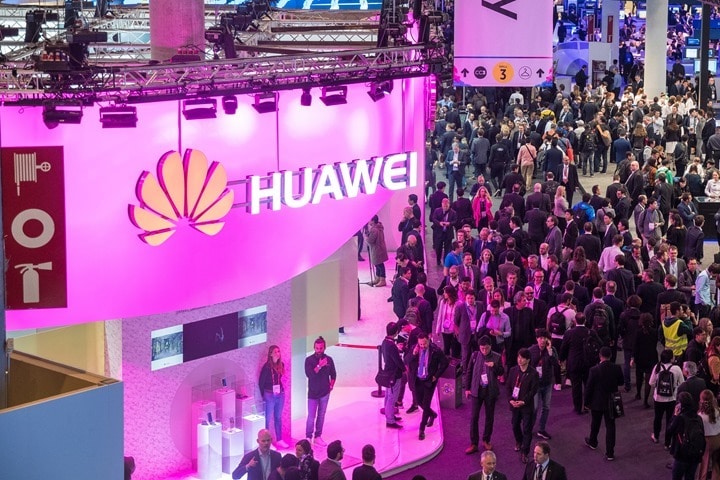
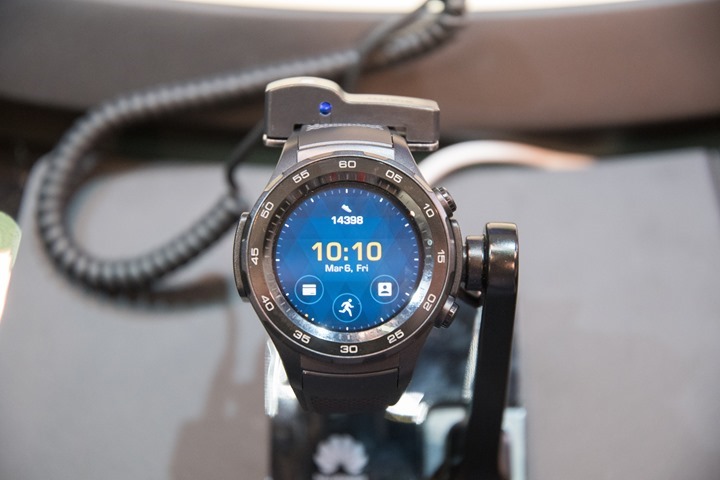
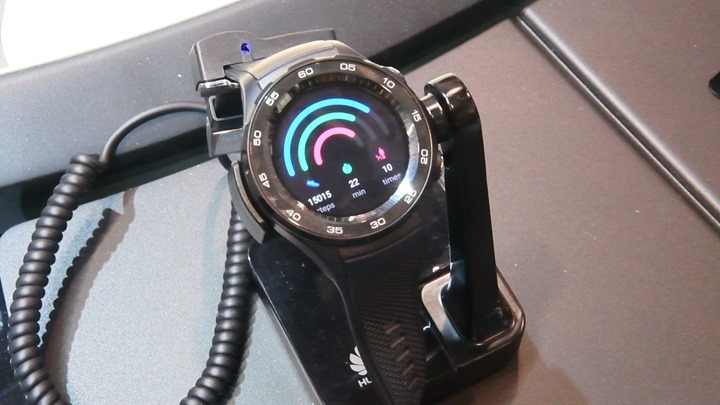
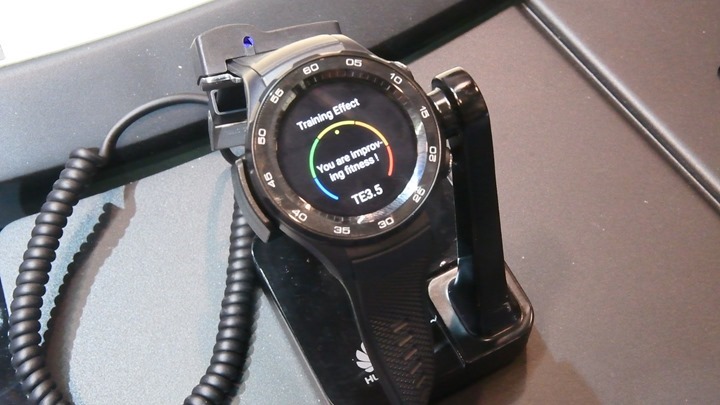
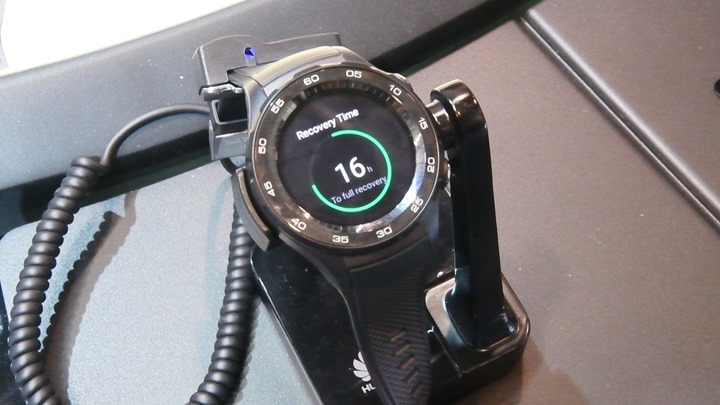
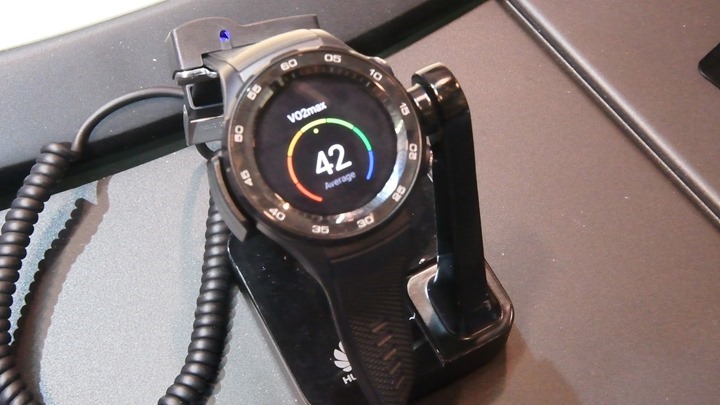
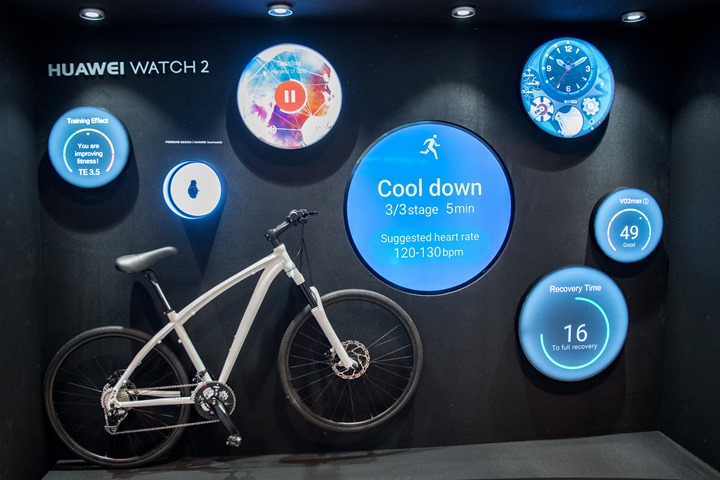
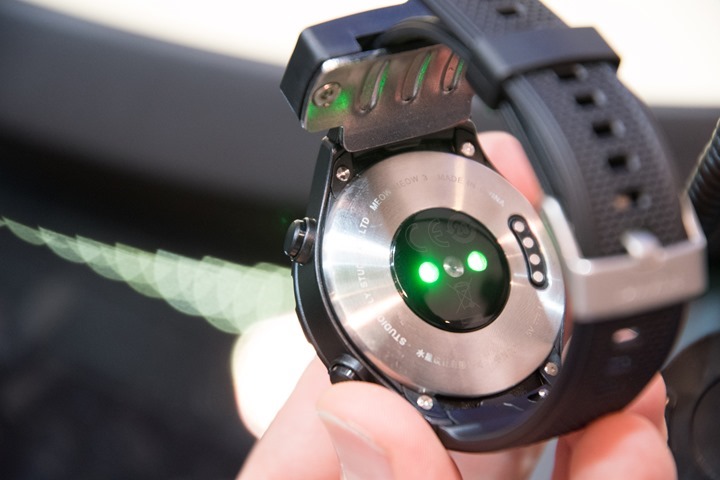
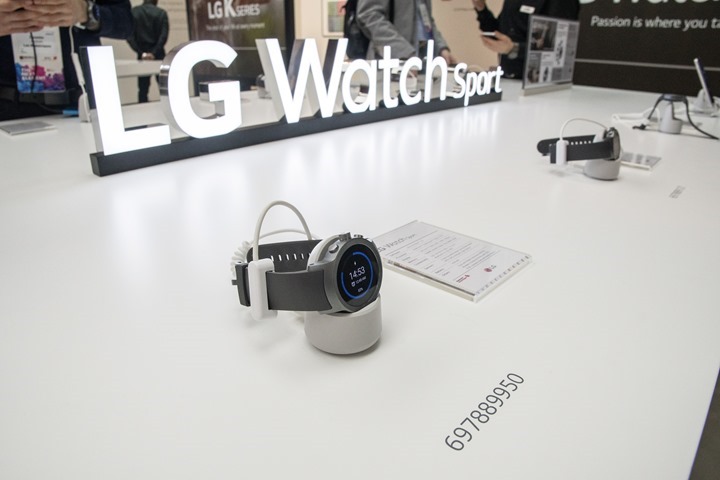
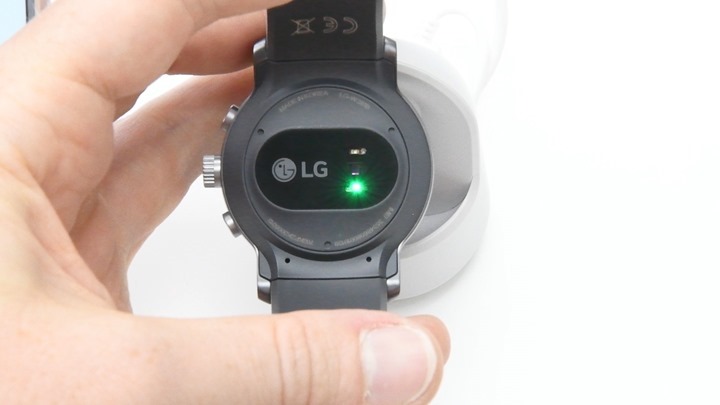
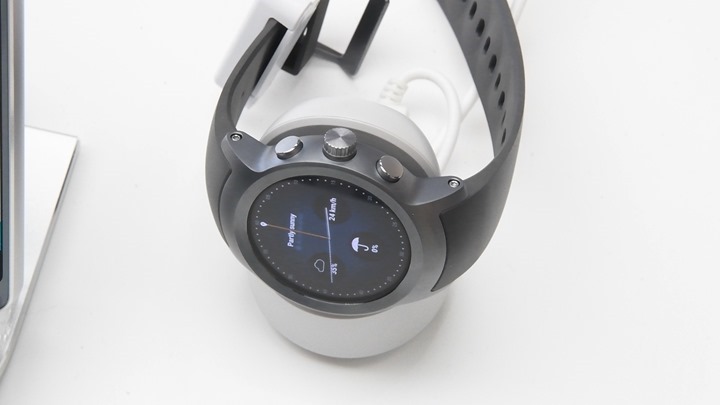

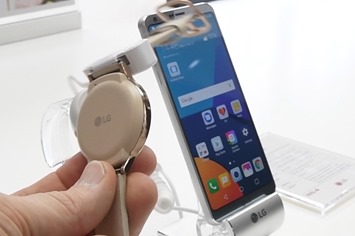

















Why don’t Google and Garmin get together already and make the end all of smart watches?
Garmin doesn’t need Google to create an Android Wear watch. The whole point of the platform is that anyone can make an android wear watch.
Garmin doesn’t need Google because the Garmin products are specific for sport. And (imo) vastly superior to Android Wear products (for my use case). Garmin can build from the ground up a platform that serves the needs of the fitness community instead of distilling their product into a “consumer electronics” device designed for the mainstream. I know this sounds really elitist – I don’t mean it to – but I really hope Garmin does not integrate with Android. Or if they do, that they also keep the non-Android platform alive. I think it would only take away from the products while diverting focus towards the mainstream.
Polar has made an AW watch. But they clearly stated it won’t replace their own platform in the foreseeable future. It would be too complicated to replace simple fitness bands (Polar loop), too expensive to replace entry level/midrange watches (M200/M400) and battery life isn’t long enough to satisfy enthusiasts (V800).
I hope you receive enough requests to consider testing the Huawei Watch 2. I wouldn’t pull the trigger on this without knowing your HR and GPS accuracy results.
The Huawei-Watch sounds really interesting. As Iphone-user a whole new watch-world opens now with Wear 2.0
What are those 2 buttons for? Can we start/stop runs with them?
And I read there will be different versions, bluetooth only, with physical SIM or with eSIM. Is the price the same?
Thumbs up for a review!
I’m guessing with the bike someone doesn’t know how to thread a chain through a rear dérailleur!!
It’s like one of those Where’s Waldo things, can you name/find all the ‘issues’ with the bike?
Issues, Ray? I see two tires with air in them, a functioning chain, handlebars and pedals. What else does one really need? :)
Thanks, Ray.
Even more information than expected.
+1 for ToniM’s request.
Would also be interested to learn about GPS and HR accuracy.
Furthermore if there are possibilities to create own training scenarios (like interval training) …
Kai
I’m really interested in the new First Beat features. Have you tested the training load, training status and stress score features? Does these advanced metrics require the use of an HR strap, og will they work with optical HR? I’m thinking of getting the Fenix 5s.
My understanding is all these work with optical, same requirement there as the Fenix 5 series.
Huawei Watch 2 looks very, very interesting. I’m looking forward to your In-Depth Review™!
Huawei-Watch looks very interesting. Is it fair to assume that the battery life will be terrible, as per the Polar Android Wear watch ? (M600??).
Love the idea of having a sim slot in the watch – could this turn it into what the Pebble Core hoped to be, but in a watch format ?
Price looks compelling too, especially factoring in the hideous cost of the Fenix 5.
Pretty similar battery life, except the cool battery extender mode. But in that mode it basically just turns into a Withings Activite watch (purely time and steps – absolutely nothing else).
Could definitely be a Pebble Core-style option, especially with the ability to remove the bands…it’d be kinda the same size.
Interesting that they have gone down this VERY sports watch-specific route. Could definitely be a Suunto/Garmin/Polar/Tomtom disruptor.
Hi Ray,
Do you think that in the long term Android wear, for example, can evolve in a real competitor to the garmin Watches?
An Watch with android wear platform, the same battery as a garmin watch, ant+ connectivity and a garmin app to register the activities will be a lot more interesting product than a pure garmin with connect iq don’t you think?
Not until battery life is solved. Which, would qualify as long term.
I think you’re seeing companies trying to ‘solve’t that issue themselves. For example both Casio and now Huawei doing low-battery modes. The problem is both those modes are more restrictive than what you’d get on a Suunto/Garmin/Polar/Fitbit in terms of smart notifications (they would work on the fitness watches, but not on the Android Wear watches in that mode).
What would be really ‘interesting’ is if Garmin were to trial making their platform available as an app, but for pay. For example, what if you could get all the core sports watch functionality of a Vivoactive HR for…say…$75 as an app? Would you buy it? Would you buy a Fenix ‘app’ that costs $125?
That may sound steep – but one has to realize that the VAHR costs $250ish, so you figure the profit on Garmin there is probably in the $50-$80 range, so they’d have to recoup that somehow.
Food for thought.
(Nitpickers corner: Before someone says those apps already exist on AW with other companies, the reality is they don’t. Not to the extend we’re talking about here. I’m talking *everything* – like structured workouts, swim/bike/run, navigation, etc… No 3rd party app does all that. And even if you try and combine all the 3rd party apps together, they still don’t do it, let alone do it cleanly.)
If you add in proper training plans and move to a subscription model I think it could be very successful. I don’t think consumers are conditioned to pay $75-$125 for an app. But $3 per month for VAHR features and $5 for Fenix features… well that would be interesting.
Call me Garmin!
That’s actually a VERY interesting concept. Some thoughts come up:
* The number of wrists we have is limited. If I want a full fledged smartwatch and it gives me the basic functionality I want, will I spend the money going for a sport specific watch? I presume most readers here will, but the market shrinks, dramatically so as the Wears and Apple Watches become better. Same problem Swiss watches have. TAG Heuer Connected was a necessity to survive long term. Maybe the same for Garmin — If the Fenix series does not answer the smartwatch call, then this becomes necessity.
* Would this be a collection of native apps or a simulated Garmin platform?
** A Garmin simulator would be an incredible product differentiator and all Garmin apps would play in it. That said, the Garmin apps would still be limited to the embedded-system-like ConnectIQ capabilities, and it does split the developer world into two — if I develop an app and eventually most of my users are using it within the Garmin simulator, why would I not develop it natively?
** If Garmin ports the app collection, the native apps would likely perform better. It would require additional dev time to port + more time investment going forward. Plus, a collection of native apps would start competing with other apps written natively pretty soon, so that is a race to the bottom.
* Most importantly, as we see in the software world from Adobe to Autodesk, the time of one-time software purchases is gone. A $3 and $5/month subscription (as per comment below) would likely have much greater attach rates and be better for Garmin in the long term anyway.
* I think Garmin has illusions about ConnectIQ becoming a full platform. That said, I played around and made rudimentary apps in both Apple Watch OS and Android Wear. I downloaded the ConnectIQ SDK and just reading the instructions made me give up. As-is, not happening. Go back to point #1.
Rock, Garmin, Hard Place.
Ray,
How would that solve the problem? If the Garmin app were available on android wear or apple smartwatch, it would be available on a platform that had terrible battery life.
Instead, I can think of two options for Garmin.
1. Pay to Play:
sell a Fenix 5 or VAHR for dirt cheap (maybe even below cost of the hardware). Then have customers pay to unlock features either one-time or monthly.
Want running metrics, but don’t bike? $3/mo
add bike metrics? add $4/mo
Don’t need jumpmaster (or rowing, or Ski/board mode, or golf)? don’t pay for those features
or
2. Make a truly Advanced-Sport focused Android-wear watch optimized for battery life
Give it all of the features of the best of Fenix 5, and all of the capabilities of Android-wear, then remove the beautiful screen and replace it with a simple, readable paperwhite screen. Take away all color and over-crowded pixels, and I am guessing you can take a watch like the Polar v600 from 2 days battery life to 5 or 6. Problem solved. It wouldn’t satisfy all markets, but it doesn’t aim to. It satisfies the market that wants a great, dedicated sports watch with an open, connected, app friendly, android platform.
Thoughts?
Mitch-
For my assumption above, I largely assumed battery life on AW would be solved. Without it being solved, I agree it’s less desirable. Still, many people have commented that they wish they had an Apple Watch by day, and a Garmin watch for workouts. And that daily charging wasn’t a blocker for them.
As for a Garmin base watch where you pay by features, I do think that’s the direction Garmin should go. I’m not sure if it’d work out financially for them, but I think that’s the right approach, especially in some of the higher end models to unlocking features. For example – taking a $399 base watch, and adding features to get to $400 if someone wanted it. The trick is the economics of it for Garmin.
It would be more an OS than an app.
I don’t think there is much they can do to fix the battery problems in fully blown smartwatches. The Apple watch for example is said to have a 520 MHz dual core, 512 MB of RAM and 8 GB of flash memory and OpenGL ES support in hardware. How crazy is that? A computer with similar specs could run Windows XP, MS Office 2003 and games like Quake III arena easily. For what? They use a system that probably outperforms the original XBOX just to display notifications, count steps and tell the time… What a waste! This just takes too much power even if it is clocked at a low frequency most of the time.
I don’t know exactly what’s inside a Garmin or Polar watch, but obviously it is only a tiny fraction of the above. Garmin connect Apps are only a few kilobytes. The Polar M200 has 4 MB of flash memory. Such watches have displays that are readable without a constant backlight. Of course these last much longer at similar battery size.
UGh, if the garmin went “in app purchase route” or “monthly fee route” I am done. I don’t mind paying a 1 time fee for purchases, but I am sick of the corporate monthly payment model.
Yeah, I don’t think that scenario can happen without a real, significant breakthrough in battery technology.
I think Garmin should do two things that would make them a real smartwatch player
1. Build an android wear watch with their own Garmin app for running.
2. Partner with Spotify (though could be a google issue) with Spotify for offline music playback. I think they should do this either way as it would cater to a younger generation and those tied to carrying phone for music when running.
Go mighty is creating an iPod shufffle like thing for Spotify offline, but that’s another device.
Then use the fenix body and sensors, tied with a low power gps only mode and bam…game over.
That’s my ultimate smart watch, huawei is nice, but a big bulky without a big enough battery.
Good ideas. I am not sold on the trade offs for becoming a real smart watch are worth it right now. There is no way I would trade my garmin 230 for any smart watch right now or in the foreseeable future. Battery life is terrible and durability is questionable. I can’t imagine having to charge my watch every day or even once a week. I love the fact that I forget my garmin is on my wrist and ready for when I need it. Not to mention I never take it off and it takes some abuse and just keeps on going.
When I tried a smart watch, it was cool for the first week then got old and useless real fast. I gather the sport crowd prefers battery life and durability over smart watch functionality. But, maybe I am wrong.
They also should have put on the rotating crown to make this even better but I have zero idea why it was left out, ESP when android wear has special features and is designed with that in mind. Could be the lg exclusive, but seems odd
The rumor I heard is that this watch was ready a long time ago, but they shelved it until Android Wear 2.0 was ready for release. Google may have changed specs on them…
I’m willing to bet you can extract the Firstbeat APK (app files) and install it on another AW 2.0 watch.
like others already said, the huawei watch looks interesting. hope it will be reviewed here.
cumulative recovery time is a long standing (garmin) feature request of mine
Whilst the strap is removable I am not sure it’s replaceable. A lot of the radios and NFC in particular are in the strap so you would only be able to replace with something else from the OEM I would think.
Not sure if anyone mentioned this but I’m guessing the author never did a review of the Polar m600 or if they did, they clearly missed a lot of information. The Polar M600 (which will be getting Wear 2.0) does give more detailed information like recovery times, training schedules, and a slew of other in depth info on their flow.polar.com website. All the info from your watch syncs with your phone and their online web portal. The app on the phone is basically just the tip of the iceberg when it comes to tracking and training their web portal provides. It even has a social aspect built in. I attached a screen shot to just give a basic idea of their web portal (and show how lazy I was at the beginning of the week). Under community they also allow you to create and join groups based on interest/sport. If your using it for an all out workout (like all day straight) battery life using the GPS is rated at about 8 hours (probably more with the screen not on auto wake) and if your just using it casually for the smart watch features and for tracking you swim or your daily run it easily lasts 2 days or more before it dies. I normally just put mine on the charger after I wake up when I’m getting ready and then throw it on when I leave for work in the morning and I’ve never had to worry with it going dead. Also, their app tracks sleep so that’s included w/ the rest of your info. All the web services offered by Polar are free.
I do not work for Polar or have any ties to the company. I has a Basis Peak prior and LOVED it until they recalled them and stopped supporting their fitness tracking services. This forced me to go on a hunt for a new fitness band and I decided I wanted Android and I can tell ya, if you want a real fitness band that can take a beating, has Android Wear and good battery life (as far as Android Wear devices go) the Polar m600 is your best bet so far, in my opinion at least.
I’m definitely aware of the training upload from the M600 (and yes, I did a review of it).
But it’s simply not shown on the *device itself*. Most people live on the device – not wandering off to a website to dig through pages and find that data.
Said differently: Everything I stated above is precisely correct. It’s a gap Polar hasn’t filled (and one that Suunto, Garmin, and now Huawei have).
link to dcrainmaker.com
Also, Polar M600 does not have a barometric altimeter. I guess that’s the reason it cannot estimate the number of floors ascended.
My Garmin Vivosmart HR+ did that fairly accurately.
Unfortunately, I had to return my Garmin Vivosmart HR+ because there was no easy way to download ALL of my data, especially continuous heart rate.
(Garmin connect only allows downloading 1 day at a time, in a horrible format.)
Even though I have no interest in the smartness of my new watch (Polar 600), I don’t see any other way to really own my fitness data, which is made possible by Android wear’s openness.
I wish you make your readers more aware of their right to own their data. I wish they also boycotted products that don’t let us download all the data about us that the product harvests.
“If you ignored that part, then it’s really no different than Garmin’s Fenix series in terms of size.”
My watch obsessed hipster friends consider the Fenix to be Godzilla sized.
Hi Ray.
Re the Huawei, can it be paired with a footpod and app that allows calibration? That would be a good start. Then it depends on the backend. Within Polar flow i currently have 118 favorite workouts that i can just drag to my diary and sync up. In speaking with them is structured workouts on the horizon?
You can actually pair up with any Bluetooth Device. This is me on the bluetooth pairing page onmy Original Huawei Watch (Running Android Wear 2.0 RC5). You’ll see that my Vortex Smart is available… thus you’ve got Bluetooth Power, Trainer Control, Cadence, etc at your fingertips… The same is true of a on-bike power meter (mine’s an ANT+ P2M so it won’t show up there)
As I commented on Ray’s Huawei Watch Youtube, It doesn’t take a Garmin to make an app that consolidates all the information. Android Wear 2.0 has watchfaces with customizable elements. If you take the standard Bluetooth, and possibly ANT+ metrics read by a compatible watch/phone you could put them all into a watch face. Alternately, you could just display them like happens in the existing very simplistic Strava or Runkeeper Apps which show HR, Pace, etc today.
Strava or Runkeeper, or Wahoo could easily build an app by porting their existing code to the watch, Wahoo is probably ahead in this case as their app is the most flexible and can hit the most devices… Its just a matter of the will to do it, programming expertise, and preferably an existing platform for fitness apps with exports to compete.
The radios on the Huawei 2 are in the ceramic bezel, not in the strap. That’s why the bezel is so wide. So straps are replacable.
Just checked Firstbead.com and under consumer i found the App Fjuul
It seams to have all First Beat functions for apple watch.
Would that move a Apple Watch close to a Polar V800?
Did someone tried Fjuul?
I didn’t try it – but I did look them up. The FirstBeat functions are part of the ‘Fjuul Premium’ package, priced as a service at 4.99 EUR/month or 39.99 EUR/yr. That’s not in the ‘cheap’ range, as it offers basically what you can get on an FR230/235: VO2Max estimation, Training Effect measurement, recovery advisor and race predictor. There are also two not-so obvious features: real-time guidance and ‘coaching advice’.
Thanks as ever for the quick look Ray. For me the all important question is is it waterproof?
Ip68
Hi DC. Will you be testing the new Swimmo watch?
link to swimmo.com
It look interesting as a swimmer/triathlete specific training and racing HR monitor, lap tracker, & GPS unit.
Interesting that it’s finally shipping. I might poke at it later this spring.
Hi Ray.
Forget about Swimmo. It is not woth testing. I was one of the dumb guys who bought one a year ago in presale (al a client not as a supporter). Three weeks ago the watch arrived.
It does not work at all. The swimming functions are poor. The handling is a pain in the back.
I expect that no one from swimmo has any relation / knowledge about training for competitive swimming.
At least the display is unreadable under any brighter light conditions. (see the image) I want to give it back. The support told me “restocking fees up to 50% of the device value might be charged (based on the condition of the watch)”
bon sportivement
Marco
Interesting, definitely good to know!
@Marco.
I too bought a swimmo. Seemed OK the first couple of time out but needed to use it more to get used to the tech stuff.
I’ve had it for a month now. The battery doesn’t even last a half hour after being fully charged. Pretty much worthless.
You’re better off using a SportCount lap counter for $46 from swim Outlet, and that’s no exaggeration!
The rumor I heard is that this watch was ready a long time ago, but they shelved it until Android Wear 2.0 was ready for release. Google may have changed specs on them…
Whoops, this was supposed to be a reply to another comment. On mobile. Whoops.
Would love to see a complete review of the Huawei watch. GPS accuracy, optical HR, can you connect a bluetooth or ANT+ sensor, waterproof. If these are ok, there’s no reason to get a Fenix or a Polar (for me at least)
Also is it really 30 days battery life in step counter mode??
Is FirstBeat software that could be added to the AW?
I presume in this case you mean AW = Apple Watch.
Sure, technically. But realistically there’s not a chance in hell that Apple would do that. Quite frankly they’re too ‘proud’ to do so. They want everything in-house.
Garmin can’t even get their Into Sports and On the Trail teams together.
Also thumbs up for review.
Although Huawei is not well-known in consumer electronics in NA and Europe (but certainly is in Asia), they are leaders in the world in network equipment, ahead of Ericsson & Nokia/A-L. So have some strong R&D capacity. Used to have their phone, was pretty satisfied.
Thanks, DC!
Indeed, from my IT days, Huawei is a definitely a big player.
Great article DCR
Wondering if the HW2 sport is able to collect power data and integrate it within firstbeat?
Thanks
Not to my knowledge.
Hoping to see a review on the New Balance Run IQ soon.
I killed my previous one. Here’s the super-short version of my review: link to forum.slowtwitch.com
Wow, thanks
That kind of review makes you wonder how that EVER got to market, whatsoever. Like, New Balance and Intel (and whoever else involved) HAD to know it was a horrible product. A false sense of being able to fix it later? Sunk costs? So odd.
Corporate management, long term employees, marketing pressures, department goals, decision by committee.
Ultimately, they put the wrong people in place and/or did not enable them to hit the “HALT” button.
Since the most likely people to buy this are going to be existing NB customers, burning them will cause significant damage to the brand. IMHO, I would push the big red button and get it done right.
wow, now I know why Strava never advertised it!
Hi Ray,
I first would like to thank you for your contribution to the wearable space.
I have been looking for a smart watch with sports tracking capabilities and honestly didn’t think this was possible until the huawei watch 2. Yes the polar is good but it’s too bulky that I can’t wear it for work.
I would greatly appreciate if you could do a full review on the huawei watch 2. I’m looking for accuracy (pace and heart rate) battery life (I plan on using it for sleep tracking) and of course screen brightness outdoors.
I guess if this watch doesn’t meet these requirements a Garmin watch would be my best option.
Merci, Gracias, Thank you!
I’m surprised not more people are going “ooh, wow! It’s got mapping!”
I think this is a very compelling watch (coming from a happy fenix 3 wearer).
One thing I would like to know is how you use a 3G cellular sim card with your current plan? I presume if you do an add on for an additional “phone” with your carrier you will have a different number (and associated different costs)?
But having an all in one watch and not having to carry a phone around is a neat concept.
Yeah, it varies based on carrier. Some (many) carriers now have data option add-ons that are designed for watches that are much cheaper/reasonable.
As it doesn’t seem the 4G-version of the Huawei watch 2 will be avaiable in Switzerland I’ve ordered it from Amazon (Germany) now. No shipping-date announced yet but I can’t wait to get it!
I hope it won’t get a similar DCR-review like the NB RunIQ (finger crossed!)…
Huawei unknown brand? jeesus…
Does anybody really still buy Garmins???
Let me know how many North American’s out of 100 can identify Huawei. Once you’re done, survey how many can identify Garmin. I’d even give you a 10x multiplier if the people could both pronounce and spell Huawei.
While Huawei is known in Asia, the simple reality is that it’s not known to most North American (or even European) consumers. Sure, enterprises have used networking gear in both regions, but consumers…non-existent. One only needs to look at the IDC estimates to see that.
I’m a telecoms specialist with 16 years in one of the biggest companies in the world. I still can’t spell whoowarwhey! I swear they change it every year! ;)
The Huawei has an amazing screen compared to the Garmin 5 which looks really dark, fuzzy and outdated.
Most Android Wear screens look great. Which…is why the battery life is about 1-2 days (or less), and not always-on.
You trade screen brilliance for battery life. To each their own.
Probably the end of Garmin with these super looking Android watches coming out like these as well as the Polar600 (and maybe a new V800 android?).
I can’t understand anyone wanting to buy the new Fenix 5 with a closed ecosystem and old dull screen
Polar has stated quite clearly that they have no plans for a V800 successor based on Android Wear. The battery life isn’t sufficient for it.
I suspect the ‘problem’ is that most people who don’t do endurance sports don’t understand why Android Wear (or the Apple Watch) simply isn’t viable. It’s not. End of story.
Until battery life gets you 50-75 hours on GPS (turned on with display on), and until there are as many dedicated buttons as folks want…then it’s a non-starter for endurance athletes.
With regards to the Huawei watch – if the optical HR sensor isn’t as accurate as it needs to be, could one presumably pair it with a Bluetooth HR monitor that is more accurate to make up for the difference? Not a good solution for someone looking for an all-in-one, but if you’ve already got it, and it makes the Android Wear platform usable on the device, might be an interesting idea?
Understand your comment above about how Android Wear won’t be good for endurance athletes, which is completely fair…but the longest run I plan on doing is a half-marathon, so I don’t think I exactly fall into that category
Hi Ray. Are you planning on reviewing the Huawei Watch 2? I just read a review gsmarena.com but I don’t trust it as they state the watch lacks NFC (Ihave seen several screenshots with Android Pay). They also stated that the GPS refresh rate is every 1-min. If that was true It would have been a real bummer. I wonder if developers can change it making it per-app setting.
I do definitely want to do something on it. I need to touch base with them. We had traded some e-mails last month, but then they went quiet.
As an interesting aside actually, the GPS refresh rate is similar to what New Balance does…unless you tap the screen or whatever. Though, behind the scenes they do record the data.
Any update on that review for the Huawei Watch 2? I’m seriously considering it so I don’t have to buy both a smartwatch and a good running watch. Plenty of tech sites have reviews on their side of things, but none of them cover the fitness aspects like you do. I’d love to see what you think.
well known gps-sportwatches manufacturer won’t enbrace AndroidWear, because this will open the door to tecnology giants like Samusung on one side and the whole Chinese manufactuerers (they now almost own the huge China and India market)
PLus their actual business is on selling hardware, not the platform yet, which is more the Runtastic or Strava business model
.
This reminds me of Motorola and Nokia….who were the leader in the mobile markets since they provided both hardware and the os running on it
but when the market move to the standard OS platform…..well’it’s the same story since the computer….
.
It will happen, it’s just a matter of when
and Garming, Suunto and Polar are struggling to posticipate that moment as much as possibile
.
Well known GPS sport watch companies aren’t using Android Wear because battery life sucks. End of story. Until Android Wear can go 20-30 days without charging, you won’t see these companies adopt it beyond experiments like the M200.
As for Garmin/Suunto/Polar struggling…sales say otherwise (at least for Garmin), they’re higher than any Android Wear device maker out there.
they aren’t struggling because Goggle hasn’t targeted their market yet (the google fit app is quite naive).
But as far as Android Wear is not customised and gets the official Googles updates…..the device features and future are not written in stone like it is for proprietaryOS sportwatches (who at least provide update to fix issue)
About battery life: as you mention in your hands on, the Huawey has already a 30days mode (like the Casio)
So I’m willing to read a comparison between M600 and the Huawei_2, both with the latest firmware available (I read the Huawey has some HBM issues when running)
Will you test the Huawei watch 2?
The reviews so far are very mixed, and all of them are not or very little training oriented. It would be nice to see a proper review of gps and hr accuracy, and how the watch face is customizable for training.
The 4g watch could be great. Its nice to ditch the phone when cycling or long trail runs alone.
Any chance you’ll be doing reviews or head to heads of the LG Watch Sport or Huawei Watch 2? I’m probably going to do a run tomorrow with one on each wrist and a bluetooth heart rate strap paired to my phone to get a better idea, but my first run with my Huawei watch 2 was a disappointment from the HR monitoring standpoint. Would love to see one of your in depth reviews with variability in heart rate monitoring and maybe a comparison of the firstbeat analytics from the Huawei Watch 2 and your Garmin?
Hi Ray. For the Huawei Watch, can you pair an external heart rate monitor (i.e. Scosche Rhythm band) with the Watch? Thanks.
Yes, I’m currently doing that using the Runtastic app. Other apps and straps should work, also.
I had a brief experience with the Huawei watch 2 I wanted to share. The battery died within a day and, rather than exchanging it, I just returned it. On the positive side, it looks nice, is comfortable to wear, has a nice screen, and good battery life(not the one I bought of course). However, Huawei’s website calls it “YOUR PERFECT WORKOUT COMPANION.” I am not ready to agree with that. One of the selling points of AW2.0 is that you can run apps independently of your phone. So, I tried a walk using the Google Fit app on the watch. Two problems there: it wanted to use the GPS on my phone, not the HW2. I was not carrying my phone on the walk. Also, the Google Fit app on the watch only has the pre-loaded standard activities (walk, run, etc…). I have several activities saved as favorites on the google fit app on my phone, but those do not show up on my watch. I called the app section at the Google Play store to see if they could help. The phone guy asked me several times about the name of the app, as if he had never even heard of Google Fit. After 40 minutes on hold, he said their specialist would email me. The email I received just stated this: For help with your query, I recommend visiting the Google Help Center. That was a big help. I then found the stock HW2 fitness app. That does connect to GPS. However, I could not find a corresponding phone app. It also had the same Google Fit app problem in that the watch only has the pre-loaded standard activities with no indication how to put my own activities in there. I guess I can summarize by stating the obvious, which I am sure DC already knows: as a fitness platform, Android Wear is a total mess.
Hi Ray,
finally may we expect a more detailed review about Huawei Watch ?
Even if the battery is very weak (as usual in Android Wear devices with bright display)
it would be interesting in trainings how Huawei’s HRM works as a base for correct values of licensed FirstBeat features.
I’ve had the watch for a few weeks.
The watch runs for about 3 days, used only in watch mode (display not always on). However, for workouts, it uses about the same percentages of battery as my Fenix 3HR, perhaps 6-7 % for an hour workout, using OHRM.
I find the OHR spot on, at least for indoor efforts on trainer, elliptical and treadmill. On my last workout of about an hour, it was 1 bpm different from the Fenix average, and precisely the same on the max.
I’m not certain about outdoor use, as it’s about a single degree F here right now, and has been in that range for a while.
The music storage is not what you might expect: Perhaps 1.5GB. However, good players are available and it handles playlists reasonably well.
thanks for sharing such a mice article.
Hi, anyone have any more thoughts/experience with the Huawei Watch 2 for sports? How’s the battery life while playing music and running? Do the GPS and HR work accurately?